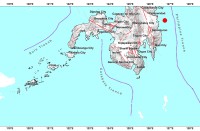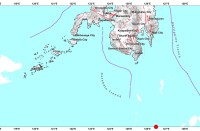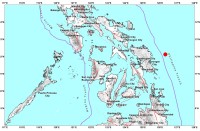(Eagle News) – The Cebu provincial government declared a state of calamity for the whole province because of the severe dry spell affecting farms and aqua farms, and causing a sharp decrease in water supply in several towns.
The provincial government passed a resolution for the declaration of a state of calamity during the afternoon session of the Provincial Board.
With the declaration, the provincial government can now spend P22 million of its quick response fund to help farmers, fsihermen and other Cebuanos affected by the drought.
At least 27 local government units have already reported damages to agriculture, including fishing.
Several towns also reported a sharp decrease in water supply, prompting some areas to resort to ration water.
Earlier, the Cebu Provincial Disaster Risk Reduction and Management Office (PDRRMO) recommended to Cebu Gov. Hilario P. Davide III and to the Sangguniang Panlalawigan to place the entire province under a state of calamity because the weak El Niño is already affectin some farmlands and rivers.
PDRRMO Chief Baltazar Tribunalo said his decision to recommend for the calamity declaration came after his office conducted a rapid assessment in certain parts of the province days before tropical depression Chedding brought rains in Metro Cebu.
He said that some farmers had already stopped planting their seasonal crops because of the prolonged heat and the decreasing supply of water in most areas in the province.
Under RA 10121, a state of calamity is defined as “a condition involving mass casualty and/or major damages to property, disruption of means of livelihoods, roads and normal way of life of people in the affected areas as a result of the occurrence of natural or human-induced hazard.”
-Aquaculture also affected-
The City agriculturist of Carcar also reported to the Provincial Agriculturist Office last March 15 that aquaculture and fisheries projects in certain barangays underwent transfers and made emergency harvests because of the effects of the extreme heat on their fishes. There was also a decreased water supply and dryness brought about by the increase in temperature.
“In Barangay Calidngan, a reported 15,000 stocks of Tilapia under fishcage type aquaculture were transferred to another location due to the decreasing water. However, the stocks perished upon relocation due to the hot temperature,” according to a release of the Cebu provincial government.
It said that in Calidngan, some 6,000 tilapia stocks under fishcage and fishpond type aquaculture suffered emergency harvest.
“In Barangay Guadalupe, four units of fishpond-type aquaculture with a maximum area of 360 cubic meters and 3,000 tilapia stocks experienced low water problem and stagnated growth among the Tilapia species caused by the hot weather. In Barangay Bolinawan, 3,000 meters of seaweed farm suffered dry stems and bacterial infection due to the high temperature,” the Cebu provincial government said.
At least 75 percent of the 4,000 Tilapia fingerlings in Alcantara, Cebu also died due to the hot sea weather.
Since January this year, fisherfolks can only harvest a maximum of one kilo of fish variety per day.
“Before the El Nino, fishermen can have a daily maximum catch of three kilos a day. These varieties include Danggit, Gisaw, Bunong and Pasayan,” it said.







